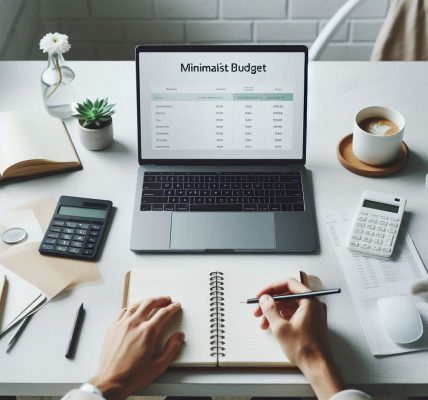Budgeting is one of the most effective ways to take control of your finances and work toward achieving your goals. Whether you’re saving for a big purchase, paying off debt, or building an emergency fund, a well-crafted budget helps you stay focused and disciplined. However, many people struggle to create a realistic budget that reflects their actual expenses and aligns with their financial goals.
In this guide, we’ll cover:
- Why having a realistic budget is essential
- Step-by-step process to create a budget that works
- How to align your budget with your financial goals
- Tips to stay consistent and adjust your budget as needed
Why Creating a Realistic Budget is Essential
A budget serves as a roadmap for your finances, guiding your spending, saving, and investing decisions. Here’s why a realistic budget is critical:
1. Prevents Overspending
When you set realistic limits on your spending, you’re less likely to go overboard and accumulate unnecessary debt.
2. Encourages Consistency
A budget that aligns with your actual income and lifestyle makes it easier to stick to your financial plan.
3. Helps You Reach Your Goals
By aligning your budget with your financial goals, you create a clear path toward achieving milestones like buying a home, traveling, or retiring early.
4. Reduces Financial Stress
Knowing where your money is going gives you peace of mind and reduces anxiety about unexpected expenses.
Step-by-Step Guide to Creating a Realistic Budget
Step 1: Define Your Financial Goals
Before creating a budget, clarify your short-term and long-term financial goals. These may include:
- 💸 Paying off credit card debt
- 📈 Building an emergency fund
- 🏡 Saving for a down payment on a home
- 🎓 Funding higher education or skill development
🎯 Pro Tip: Set SMART goals (Specific, Measurable, Achievable, Relevant, Time-bound) to make tracking progress easier.
Step 2: Calculate Your Total Monthly Income
List all sources of income, including:
- Your salary or wages
- Side hustle or freelance income
- Rental income or passive earnings
📊 Pro Tip: If your income fluctuates, calculate an average based on the past 6-12 months.
Step 3: Track Your Monthly Expenses
To create a realistic budget, you need a clear understanding of your spending habits. Break down your expenses into categories such as:
- Fixed Expenses: Rent, mortgage, insurance, loan payments
- Variable Expenses: Groceries, transportation, utilities
- Discretionary Spending: Dining out, entertainment, shopping
📝 Pro Tip: Track your expenses for at least 30 days using apps like Mint or YNAB.
Step 4: Categorize and Prioritize Your Spending
Once you’ve tracked your expenses, categorize them into needs, wants, and savings.
- Needs (50%) – Essential expenses like rent, groceries, and bills
- Wants (30%) – Discretionary spending such as entertainment and dining
- Savings and Debt Repayment (20%) – Contributions toward your goals
✅ Pro Tip: Use the 50/30/20 rule as a guideline but adjust based on your specific goals and circumstances.
Step 5: Set Spending Limits for Each Category
Allocate a specific amount for each category to prevent overspending. Ensure that your total expenses do not exceed your monthly income.
- Rent/Mortgage: $1,200
- Groceries: $300
- Savings/Investments: $500
- Entertainment: $100
📊 Pro Tip: Build a buffer into your budget to account for unexpected expenses.
Step 6: Automate Your Savings and Payments
To stay consistent with your budget, automate your savings and bill payments. This ensures that you meet your financial goals without having to think about it.
🏦 Pro Tip: Set up direct transfers to a high-yield savings account for your emergency fund or specific goals.
Step 7: Review and Adjust Your Budget Regularly
Your income, expenses, and financial priorities may change over time. Review your budget at least once a month and make adjustments as needed.
🔄 Pro Tip: Use budgeting tools or spreadsheets to track your progress and identify areas where you can improve.
How to Align Your Budget with Your Financial Goals
1. Prioritize High-Impact Goals
Focus on goals that will have the most significant impact on your financial well-being. For example:
- Paying off high-interest debt
- Building a sufficient emergency fund
- Investing in retirement accounts
🎯 Pro Tip: Prioritize debt repayment over discretionary spending.
2. Allocate Windfalls Toward Your Goals
Whenever you receive unexpected money (such as a tax refund, bonus, or gift), allocate a portion toward your goals.
📈 Pro Tip: Aim to put at least 50% of any windfall toward debt repayment or savings.
3. Break Down Long-Term Goals
Divide large financial goals into smaller, manageable milestones to track progress effectively.
- Goal: Save $10,000 for a down payment
- Milestone 1: Save $2,000 within 3 months
- Milestone 2: Save $5,000 within 6 months
Tips to Stay Consistent and Avoid Budget Fatigue
1. Celebrate Small Wins
Acknowledge and reward yourself when you hit financial milestones to maintain motivation.
🎉 Pro Tip: Treat yourself to a small reward (within budget) for hitting savings goals.
2. Make Room for Flexibility
A budget that’s too rigid can lead to frustration. Build flexibility into your budget to allow for occasional treats or unexpected expenses.
3. Use Budgeting Apps and Tools
Leverage modern budgeting apps to automate tracking, categorize spending, and set financial goals.
- Mint
- YNAB (You Need a Budget)
- PocketGuard
Common Mistakes to Avoid
1. Being Too Ambitious Too Soon
Don’t set overly aggressive savings targets that may lead to burnout. Start small and increase gradually.
2. Ignoring Small Expenses
Even small, frequent expenses can add up over time. Track all spending to stay on course.
3. Failing to Review and Adjust
Neglecting to review and adjust your budget can lead to overspending or missing financial goals.
Conclusion
Creating a realistic budget that aligns with your goals is key to achieving financial stability and success. By setting clear goals, tracking your expenses, and adjusting your budget as needed, you can create a plan that works for your unique situation.
Consistency and flexibility are the keys to long-term success. Start building your budget today and take the first step toward achieving your financial dreams!




